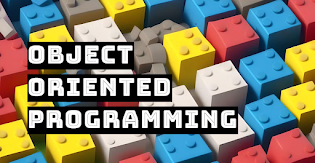Understanding Operation Systems: Foundations, Features, and Applications
Understanding Operating Systems: Foundations, Features, and Applications
Operating systems (OS) serve as the backbone of modern
computing, enabling the interaction between users, applications, and hardware.
Over the past weeks, I’ve explored the intricate layers and mechanisms that
underpin OS functionality. This blog delves into the fundamental concepts of
operating systems, how they support contemporary computing, and the practical
applications of these theories.
Fundamental Concepts of Operating Systems
Operating systems are structured hierarchically to manage resources effectively. At the top, the user interface, whether a command-line interface (CLI) or graphical user interface (GUI), acts as the point of interaction. The kernel, the core of the OS, manages critical subsystems such as process scheduling, memory allocation, and device control.
Below the kernel lies the services layer, which
abstracts the complexities of hardware interactions. This layering ensures that
user commands and software applications translate seamlessly into hardware
operations. By organizing tasks in this structured manner, the OS achieves
multitasking, resource sharing, and system stability.
Modern operating systems like Linux, macOS, and Windows expand on these foundational concepts, adding advanced capabilities such as distributed system support, robust multitasking, and heightened security protocols.
Processes are at the heart of an OS, representing active instances of running programs. Each process comprises program code, data sections, dynamic memory (heap), temporary data (stack), and execution details like the program counter and register contents. The OS manages processes through their lifecycle, which transitions between states such as:
- New:
The process is created.
- Ready:
It awaits processor allocation.
- Running:
The process executes instructions.
- Waiting:
It pauses for an event or resource.
- Terminated:
Execution completes.
The Process Control Block (PCB) stores essential
information, including the process ID, state, memory management details, and
scheduling data. This ensures efficient coordination across the system.
Single-threaded vs. Multi-threaded Models
While single-threaded processes execute tasks sequentially, multi-threaded
processes leverage concurrency for enhanced responsiveness, better resource
utilization, and scalability. However, multi-threading also introduces
challenges like synchronization and potential race conditions, requiring
careful management by the OS.
Concurrency and the Critical Section Problem
Concurrency in processes can lead to the critical section problem, where
multiple threads or processes access shared resources simultaneously. Solutions
like Peterson’s algorithm ensure mutual exclusion, allowing safe access without
requiring specialized hardware.
Memory Management: Solving Allocation Challenges
Memory management ensures that every process gets sufficient
memory while preventing overlaps and maximizing utilization. The OS employs
logical and physical addresses to differentiate between abstract references and
actual locations in RAM.
Base and Limit Registers
The base register defines the starting point of a program's memory allocation,
while the limit register determines its boundary. These registers enforce
hardware-level protection by preventing processes from accessing unauthorized
memory spaces.
Virtual Memory: Extending Physical Limits
Virtual memory enables programs to operate as if they have more memory than
physically available by abstracting physical constraints. Techniques like paging
and segmentation map virtual addresses to physical addresses, ensuring
efficient memory usage. Additionally, swapping allows the OS to move inactive
portions of memory to secondary storage, further optimizing resources.
File systems and input/output (I/O) management are critical for organizing and transferring data. Modern file systems utilize hierarchical directory structures, from simple single-level directories to complex tree-based or graph-like arrangements, enabling robust data organization.
Efficient Data Transfer
To optimize I/O operations, the OS employs various techniques:
- Programmed
I/O: Direct processor involvement in data transfers.
- Interrupt-driven
I/O: Reduces CPU idle time by triggering actions upon events.
- Direct
Memory Access (DMA): Enables devices to directly access memory,
bypassing the CPU for faster data transfers.
The I/O system integrates both hardware-level interfaces
(e.g., SATA, USB) and software-level drivers, scheduling algorithms, and
buffering mechanisms to ensure smooth data exchange between the system and
peripherals.
- Protection:
Manages access control, ensuring that programs and users interact with
resources appropriately.
- Security:
Maintains system integrity by preventing unauthorized actions and data
breaches.
Protection Mechanisms
Key protection strategies include:
- Domain-based
protection: Restricts processes to essential resources, following the
least privilege principle.
- Language-based
protection: Incorporates safeguards in programming languages to
prevent issues like buffer overflows.
- Access
Matrix: A table-based model specifying the permissible actions (e.g.,
read, write, execute) for each subject-object pair in the system.
Security Layers
Modern systems implement layered defenses:
- Program
Security: Techniques like sandboxing, memory protection, and code
signing ensure safe code execution.
- System
Security: Features such as authentication, firewalls, and access
control lists (ACLs) protect against unauthorized access.
- Network
Security: Measures like VPNs, firewalls, and network segmentation
secure data as it moves through networks.
Real-World Applications and Future Use
Studying operating systems theory has given me a robust foundation for tackling software development and infrastructure management challenges. Here are a few ways I intend to leverage these
concepts:
- Optimizing
Software: I can develop applications that maximize efficiency and
resource usage by applying process and memory management strategies.
- Securing
Systems: Leveraging protection and security principles, I can design
software and systems resistant to common vulnerabilities.
- Collaborating
Across Disciplines: This knowledge bridges the gap between developers,
system administrators, and hardware engineers, fostering more effective
teamwork.
- Exploring Advanced Topics: Concepts like virtual memory and file system organization are steppingstones for exploring distributed systems and cloud computing.






Comments
Post a Comment